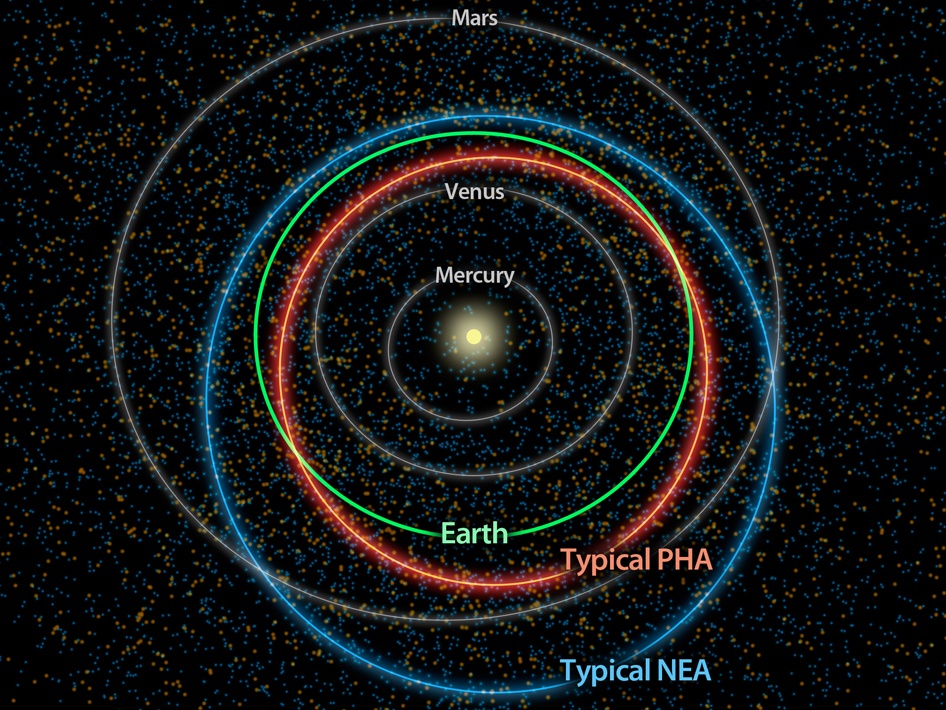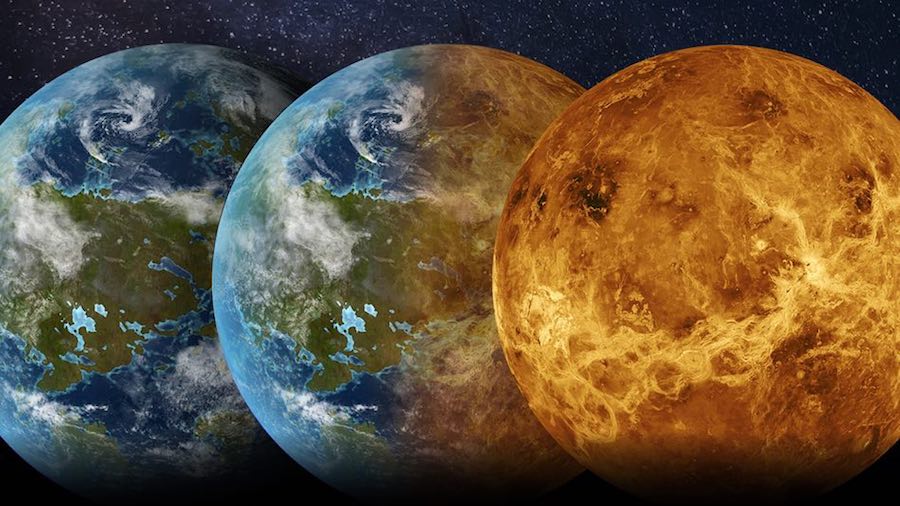Venus has been garnering a lot of attention lately, though primarily in the scientific community as the last Hollywood movie about the planet was released in the 1960s. This is in part due to its dramatic difference from Earth, and what that difference might mean for the study of exoplanets. If we can better understand what happened during Venus’ formation to make it the hell scape it is today, we might be able to better understand what truly constitutes the habitable zone around other stars.
Numerous planetary scientists have focused on Venus’ formation and atmospheric development in the recent past. Now a new paper posits that Venus might have had liquid water on its surface as recently as one billion years ago. And a contributor to the disappearance of that water might be an unlikely culprit: Jupiter.
There are various threads of evidence that Jupiter actually migrated to its current orbit from the inner solar system. Theories like the Grand Tack theory or the Nice Model show potential paths of how this could have happened. What Dr Stephen Kane, a planetary scientist at UC Riverside and his co-authors were interested in was what effect that migration might have had on Venus.
Therefore, they simulated hundreds of thousands of different migration paths of Jupiter during the formation of the early solar system. There were plenty of simulation scenarios where Venus or one of the other terrestrial planets were flung out of the solar system, and those runs were discarded. However, there were also numerous scenarios where the orbit of Venus was severely affected. One measure of an orbit is called eccentricity, which is essentially how elliptical an orbit it. Some of the Jupiter migration models caused Venus to have an eccentricity 44 times what it currently does.

Credit: NASA / JPL-Caltech
That is important because Venus currently has an extremely circular orbit, with low eccentricity. If the models of Jupiter’s migration through the early solar system caused Venus to have a high eccentricity, where did that eccentricity go?
The most intriguing answer to that question is that it was dampened by liquid water. Liquid water can dampen orbital eccentricities over long periods of times, as its movement around the planet’s surface pushes it into a more regular pattern through a process called tidal dissipation.
Credit: Science Channel Youtube
One interesting consequence of tidal dissipation is that it can potentially cause a runaway greenhouse on a planet, however the authors calculated that this most likely was not the case on a young Venus. They also ruled out another potential source of a runaway greenhouse effect: the incident sunlight on a planet. But the models showed that, while the maximum incident sunlight would be significantly increased in the case of a highly elliptical orbit for Venus, it was likely not enough to cause a greenhouse world by itself.
However, highly orbital eccentricities have another effect on liquid water. They cause it to disappear. This is a two-step process. First, highly eccentric orbits cause significant seasonal changes, and can either freeze water into snow or ice formations when the planet is farther away from the star or evaporate it into clouds when the planet gets closer to the star. While the planet is close to the star, it is also subjected to significantly increased amounts of ultraviolet light. This UV light has the added effect of splitting water molecules, leaving only elemental hydrogen and oxygen. The lighter hydrogen can then be easily stripped away from the planet’s atmosphere by the solar wind, never to be recombined into water.

Credit: NASA Goddard
Water vapor that was evaporated into the atmosphere is actually a more effective greenhouse gas than the carbon dioxide that is present in the Venusian atmosphere now. Before it was stripped away from the combination of UV light and solar wind, it could have potentially caused a period known as a “moist greenhouse” on the planet. It also might have contributed to the rise of CO2 in the Venusian atmosphere, as precipitation is a key component of the carbonate-silicate cycle, which keeps carbon dioxide trapped in Earth’s tectonic plates.
There are some additional questions that come up with these proposed theories of Venus’ evolution. One of which is, if there was so much water on Venus, where did all the oxygen go when it was stripped from the water molecules? Dr. Kane is also on a scientific team that hopes to answer that question by sending a lander to Venus in the near future, to test if there are oxides present on the surface that the free radical oxygen could have been bonded to.
There are also other potential reasons for the dampening of Venus’ orbital eccentricities other than water. One potential influence is Earth itself. To test whether this is the case, researchers hoe to understand more about what are known as Milankovitch Cycles, which are a model of the periodic changes of the Earth’s orbital parameters. If Earth indeed had a dampening effect on Venus, the kinetic energy that would have been removed from Venus’ orbital pattern would have been absorbed by the Earth. This dramatic change in the energy of Earth’s orbit would have shown itself in completely skewed Milankovitch cycles around the epoch where this transfer of momentum would have happened. While there hasn’t been any data to support this theory so far, future paleoclimate studies could shed light on whether Earth itself took away some of its closest neighbor’s eccentricity.

But the best estimation for the original cause of that eccentricity is still the migration of Jupiter. And if the gas giant’s migration happened to help push Venus into the runaway greenhouse state that it suffered from, that has significant implications for any Venus analogs that we might find orbiting other stars. As our instruments for detection of those exoplanets before even more accurate, we are likely to find many more planets like Venus. Understanding what exactly happened to the only model for that type of planet in our solar system becomes much more important when it comes to understanding the habitable zone of stars. With all the renewed interest, Venus might even draw the attention of Hollywood sometime in the not too distant future.

